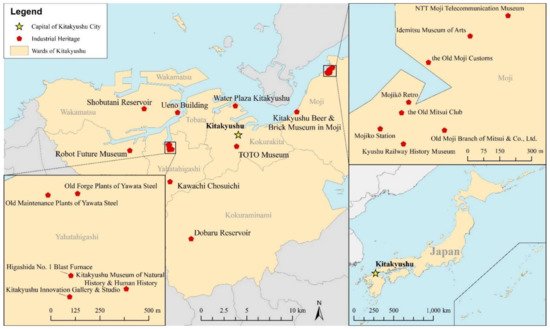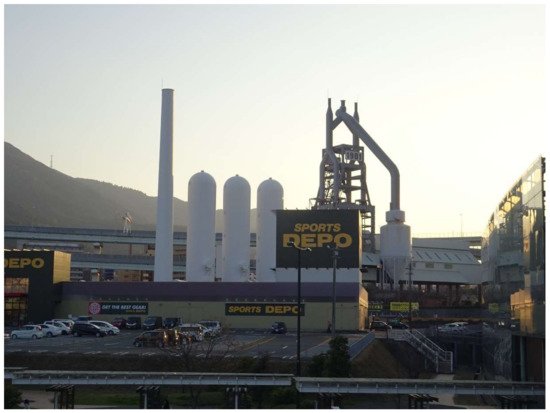Japan, Asia’s earliest industrialized country, has been transforming into a post-industrialized society. A large number of former industrial heritages in Japan have been well protected. Three industrial heritages have been listed in World Heritage by UNESCO (United Nations Educational, Scientific and Cultural Organization). Moreover, Japan has the largest number of centennial enterprises in the world, reaching 25,321, much more than that of North America and Europe. Compared with other industrialized countries, Japan’s industrial heritages are generally owned by long-lived enterprises, some of these spaces are still in service. Therefore, centennial enterprises often become the most direct stakeholders in the protection of industrial heritages, and play a key role in the transformation into new industrial space for cultural and touristic activities. In other words, under the influence of centennial enterprises, the development of industrial heritage tourism in Japan generally has strong path dependence.
- industrial heritage tourism
- Kitakyushu city
- Japan
1. Rise and Fall of KITAKYUSHU as an Industrial City

2. National Strategy for Developing Industrial Heritage in Japan
3. Industrial Heritage Tourism Development in Early Years

For us, it is not so much to develop tourism as to preserve better and display the history of our enterprise, so we do not care about tourism revenue.4. Heritage Transformation Drivn by Regional Policies
While local enterprises spontaneously launched the protection of industrial heritage and the construction of museums, Kitakyushu’s municipal government formulated a series of development plans. In 1988, the municipal government officially proposed the Renaissance Plan, which repositioned the development direction of Kitakyushu City in the 21st century as “a green industrial city centered on industries of science and technology, environmental protection and tourism by promoting the transformation of old industrial areas.” In 1991, in order to promote the revitalization of local culture, the municipal government established the Cultural Promotion Fund to support various art and cultural activities launched and organized by local residents spontaneously.
Major Heritage in Kitakyushu Heritage Constellations Higashida No. 1 Blast Furnace; Yawata Steel Works et al. Heritage constellations of modern steel industry Old Moji Customs; Old Mitsui Club et al. Heritage constellations of coal industry in Kyushu and Yamaguchi JR Mojiko Station Heritage constellations of train ferry Dobaru Reservoir: Shobutani Reservoir Heritage constellations of modern water supply NTT Moji Telecommunication Museum Heritage constellations of modern telecommunications Buildings in Kyushu Institute of Technology Heritage constellations of engineering education Kitakyushu Beer & Brick Museum in Moji; TOTO Museum et al. Heritage constellations of ceramic industry in North Kyushu Source: Compiled by the authors from the public information.5. The Formation of Industrial Tourism and Its Expansion
Although the industrial heritage tourism in Kitakyushu emerged at the end of the 20th century, driven by local manufacturing enterprises, it entered a stage of rapid development after 2010. In 2010, the Chamber of Commerce and Industry in Kitakyushu City officially declared industrial heritage as a strategic tourism resource to revitalize the region. In 2014, the municipal government of Kitakyushu, Kitakyushu Chamber of Commerce and Industry, and Kitakyushu Tourism Association jointly established the Kitakyushu Industrial Tourism Center (KITC) and launched a one-stop industrial tourism window service. The KITC works with travel agencies to develop tourist routes, and hires approximately 80 local citizens as tour guides.
References
- Cobbing, A. Kyushu: Gateway to Japan; Global Oriental: Folkestone, UK, 2009.
- Shapira, P. Industrial restructuring and economic development strategies in a Japanese steel town: The case of Kitakyushu. Town Plan. Rev. 1990, 61, 389–411.
- Ortiz-Moya, F. Green growth strategies in a shrinking city: Tackling urban revitalization through environmental justice in Kitakyushu City, Japan. J. Urban Aff. 2020, 42, 312–332.
- Ortiz-Moya, F.; Moreno, N. Filming industrial Japan: Kitakyushu, rise and decline of the iron town. Reg. Stud. Reg. Sci. 2015, 2, 480–488.
- Matsui, K. An example of preservation and utilization of modern heritage in Kitakyushu. Q. Archaeol. Stud. 2003, 50, 1–5. (In Japanese)
- Cabinet Secretariat of Japan. The Legislation of “Act on Overcoming Population Decline and Vitalizing Local Economy in Japan”. Available online: http://www.cas.go.jp/jp/houan/140929_1/gaiyou.pdf (accessed on 17 November 2020).
- METI. 33 Heritage Constellations of Industrial Modernization. 2007. Available online: https://www.meti.go.jp/policy/mono_info_service/mono/creative/kindaikasangyoisan/pdf/isangun.pdf (accessed on 17 November 2020).
- METI. 33 Heritage Constellations of Industrial Modernization, Vol. 2. 2008. Available online: https://www.meti.go.jp/policy/mono_info_service/mono/creative/kindaikasangyoisan/pdf/isangun_zoku.pdf (accessed on 17 November 2020).
- Morishima, T. Comparing Policy Responses for the Conservation and Utilization of the Heritage of Industrial Modernization. Eur. J. Environ. Earth Sci. 2014, 9, 102–117. (In Japanese)
- Sun, B.; Ikebe, K. A Categorization Research of Heritage Constellations of Industrial Modernization. Mod. Environ. Sci. Eng. 2018, 4, 856–866.

